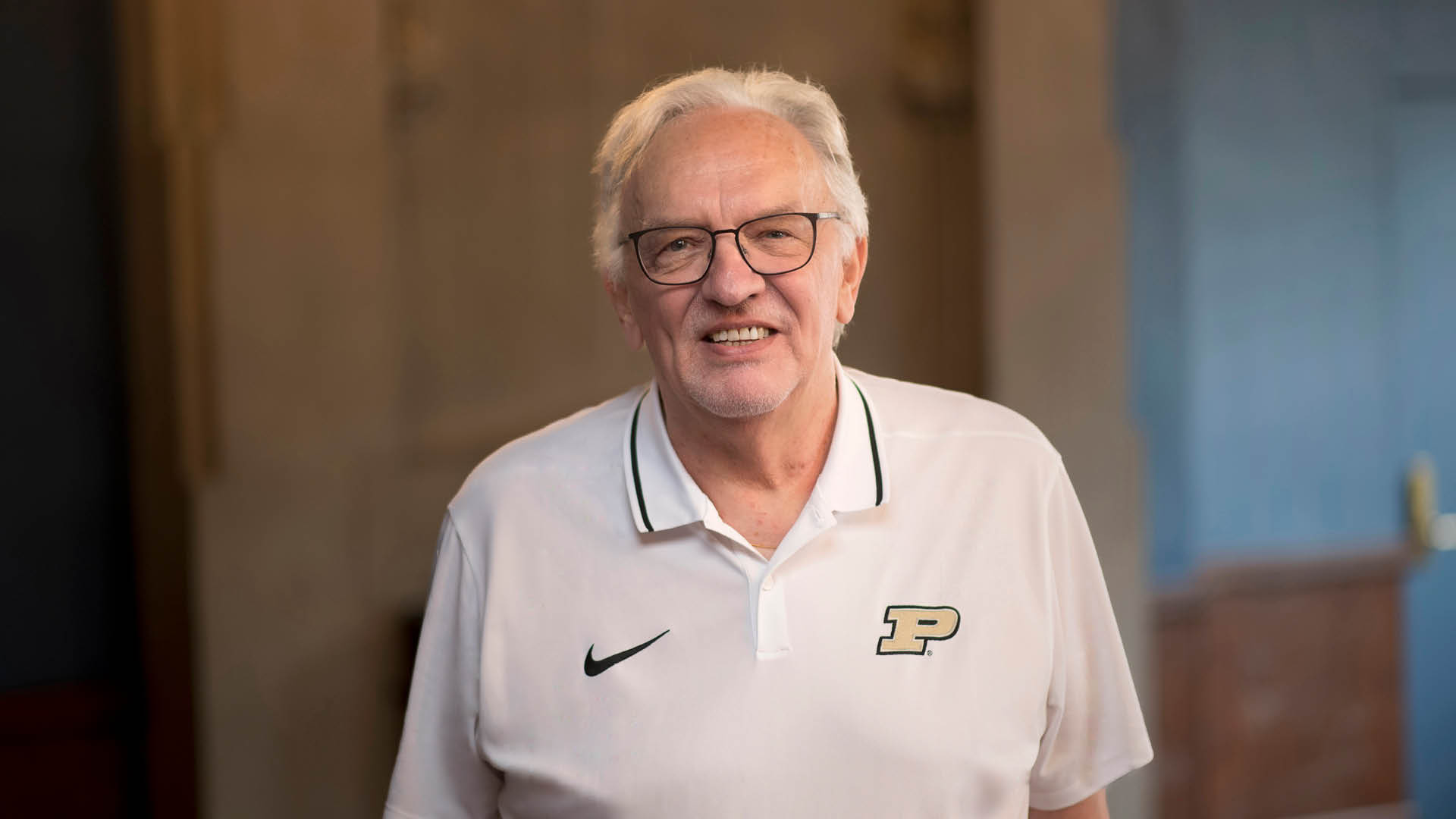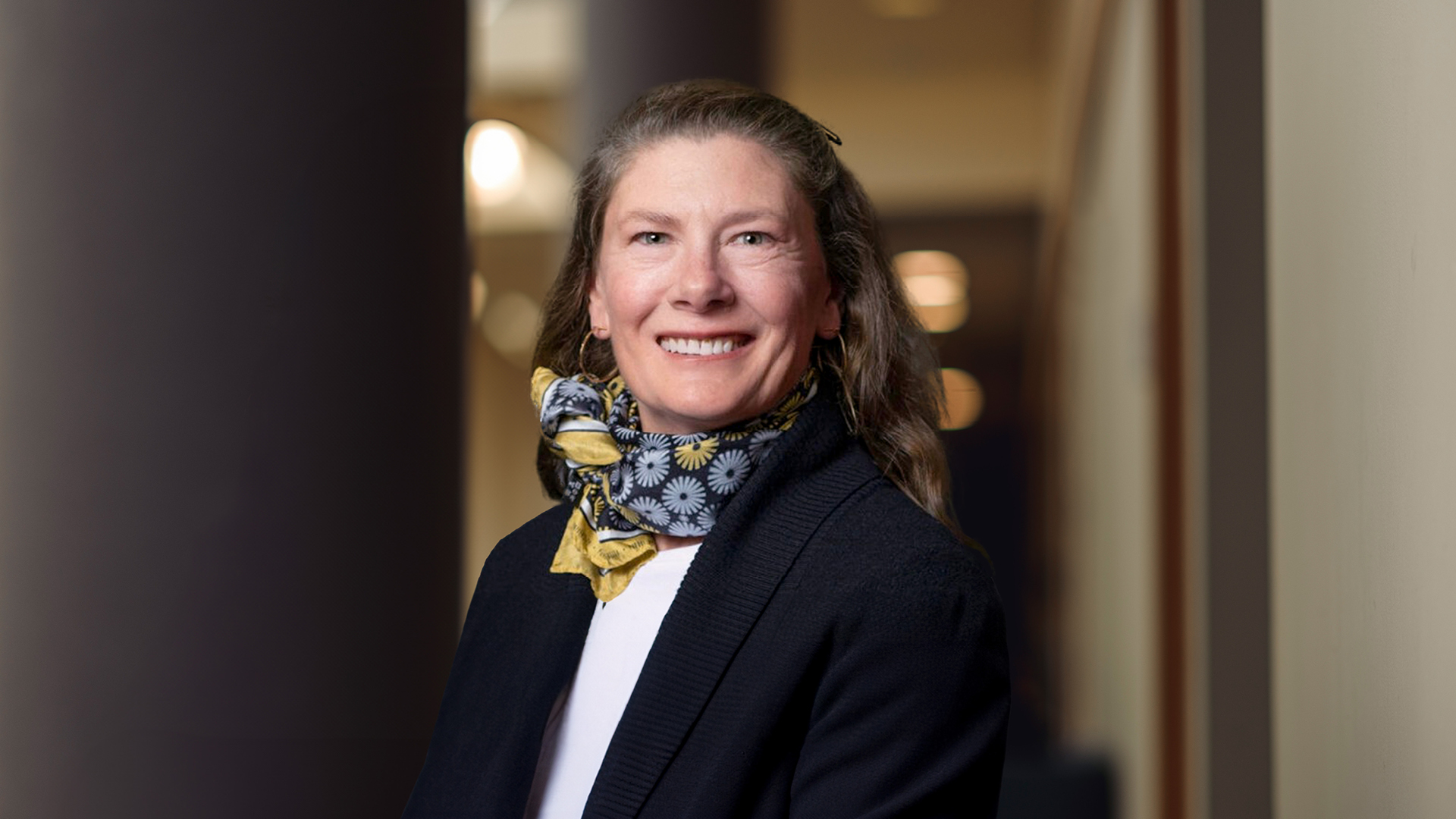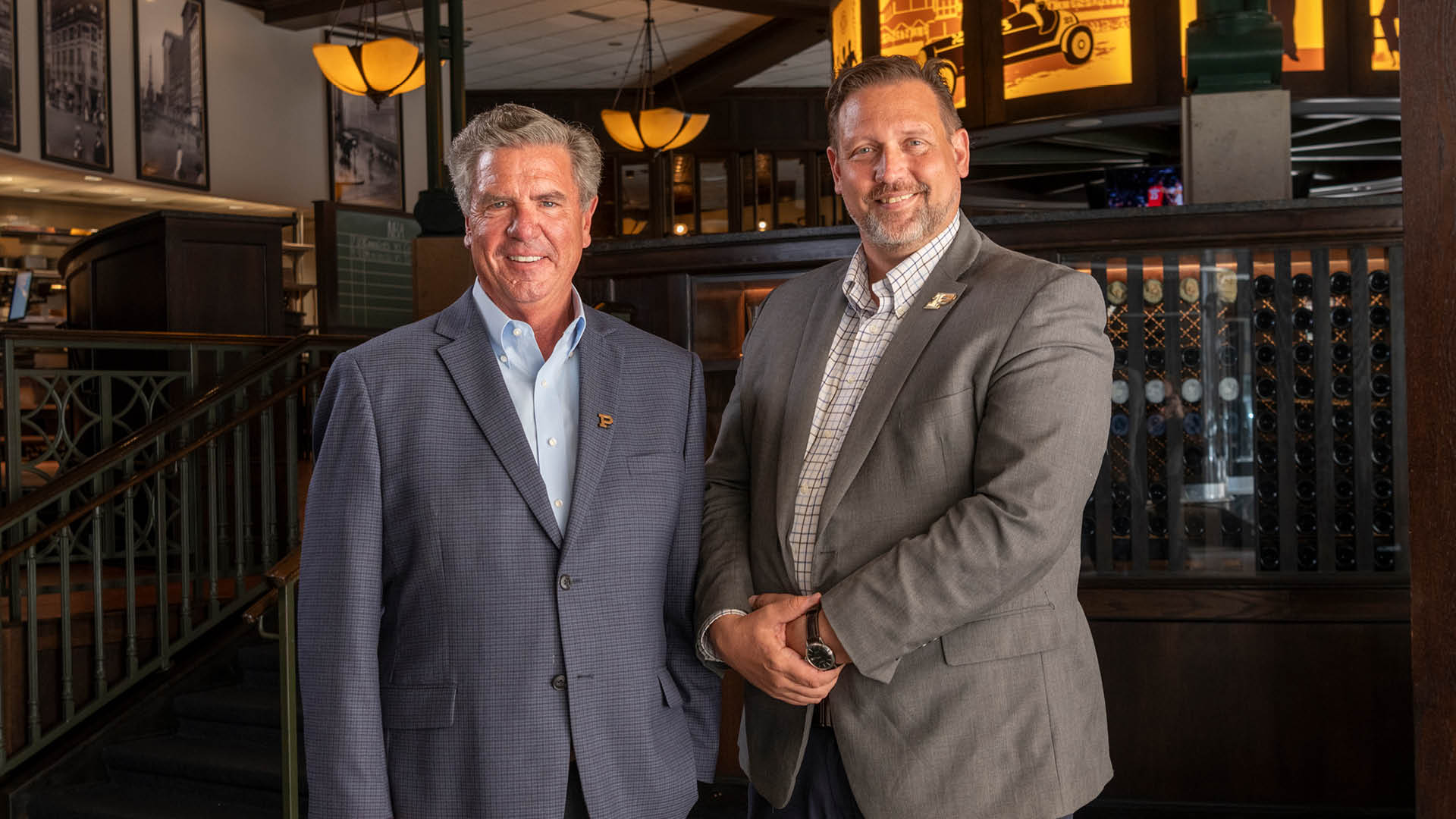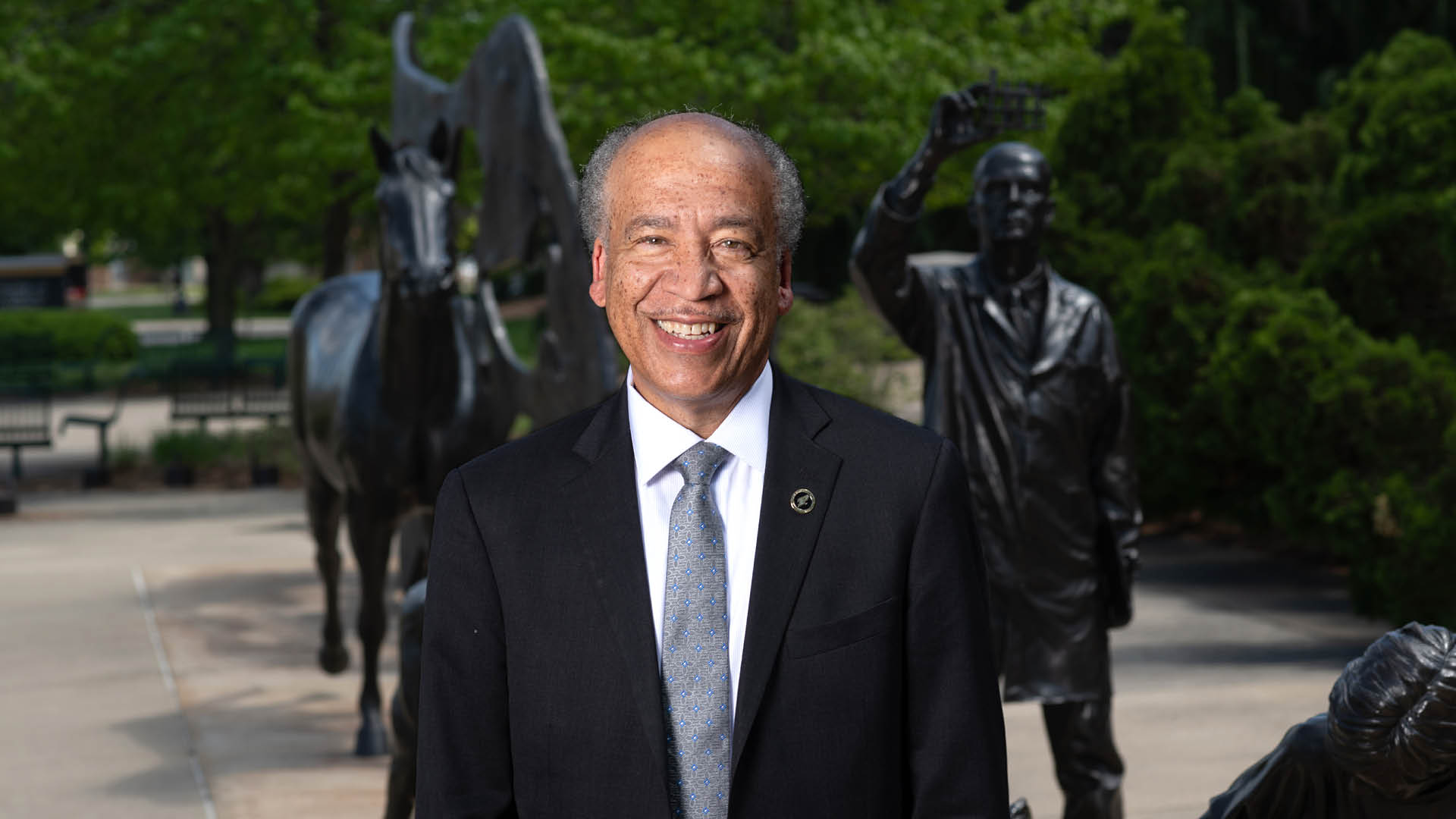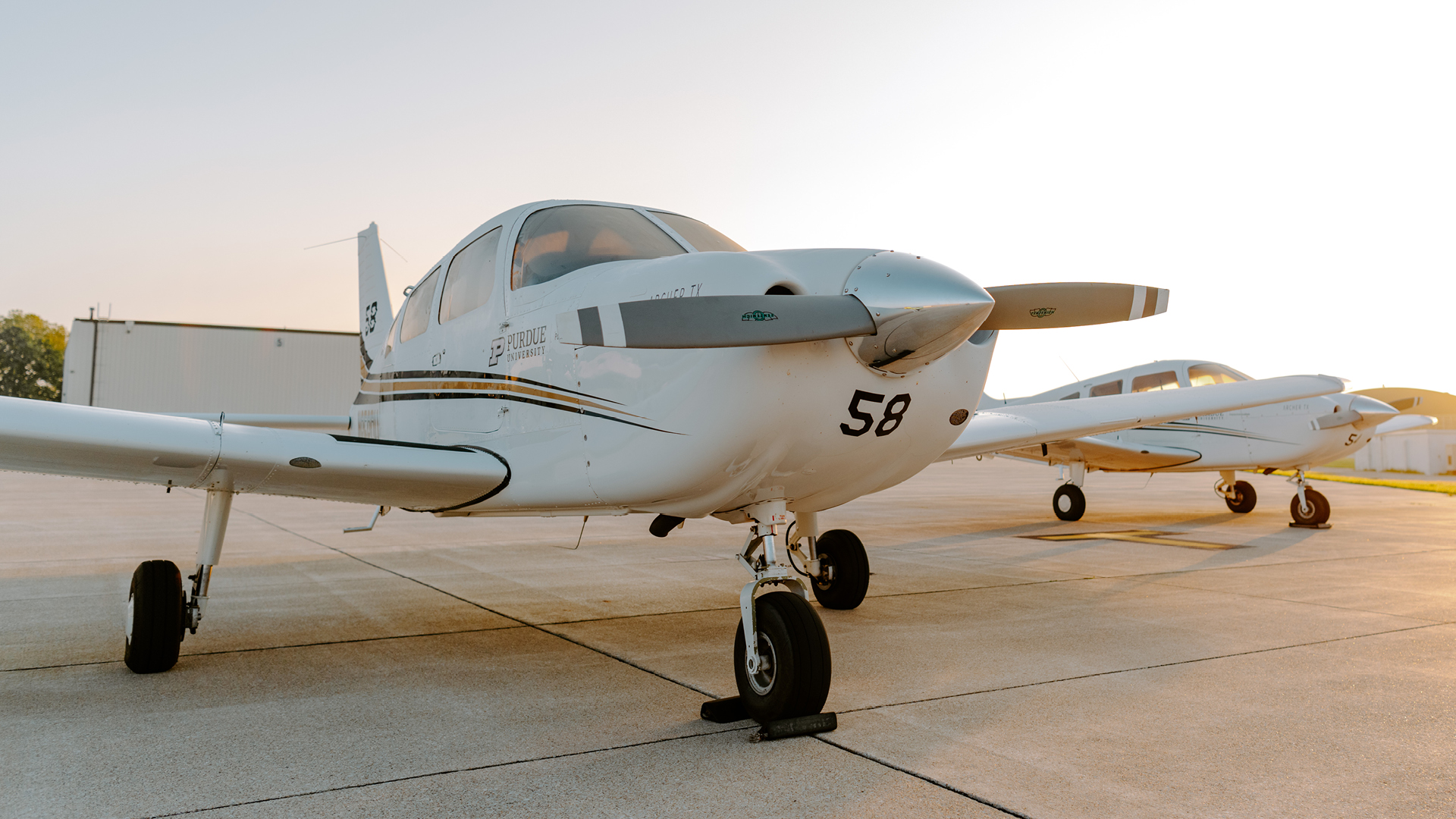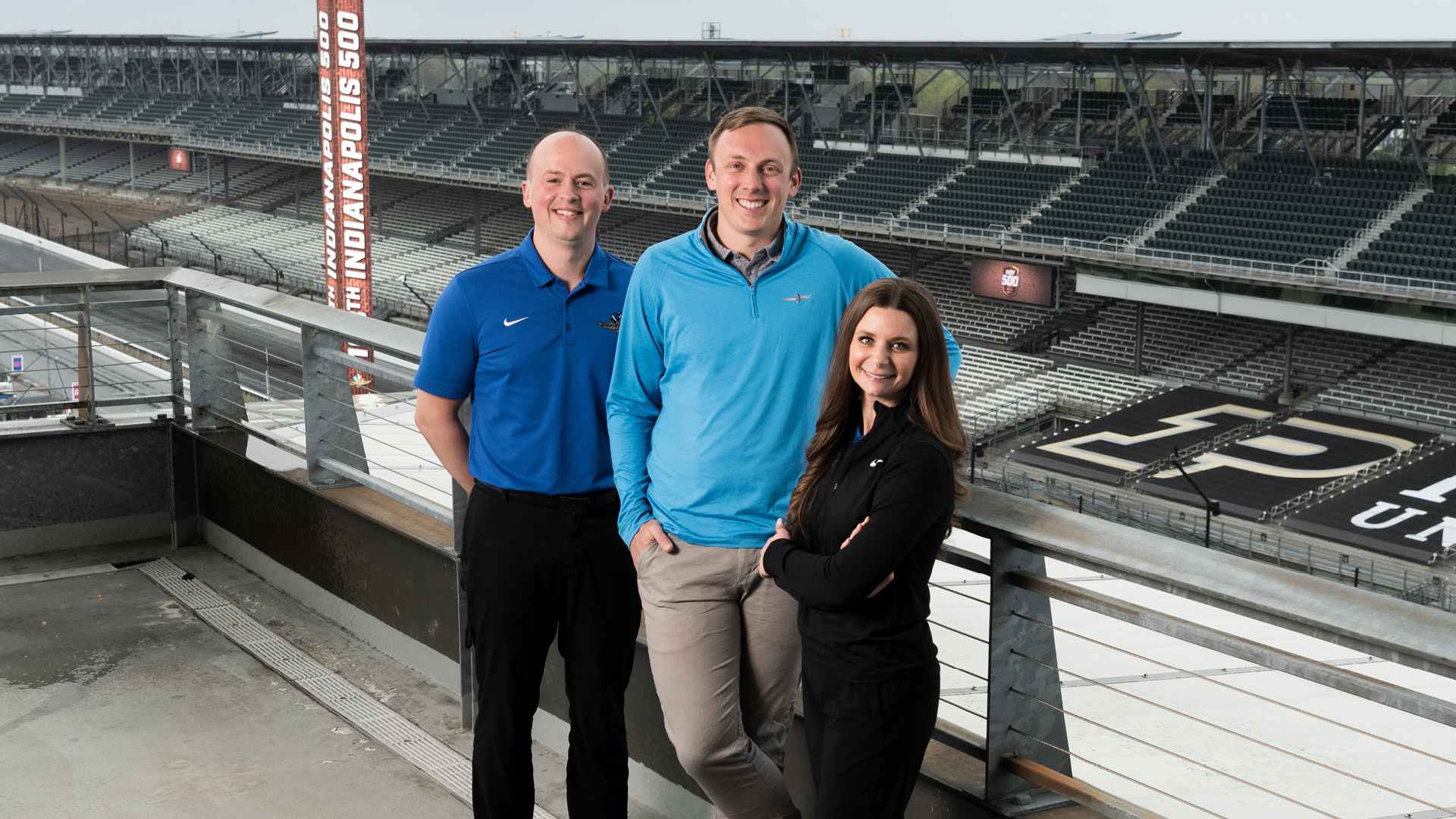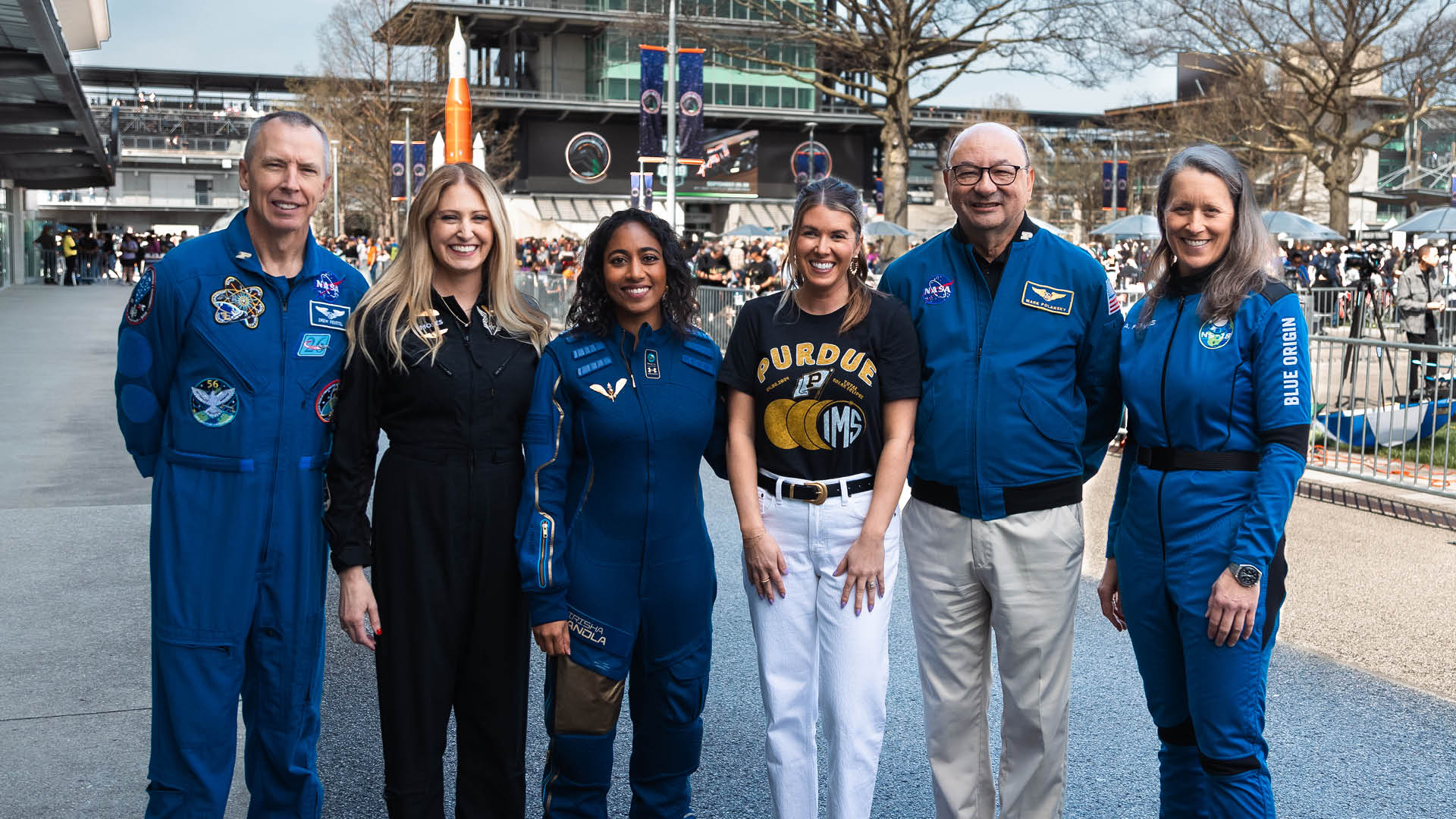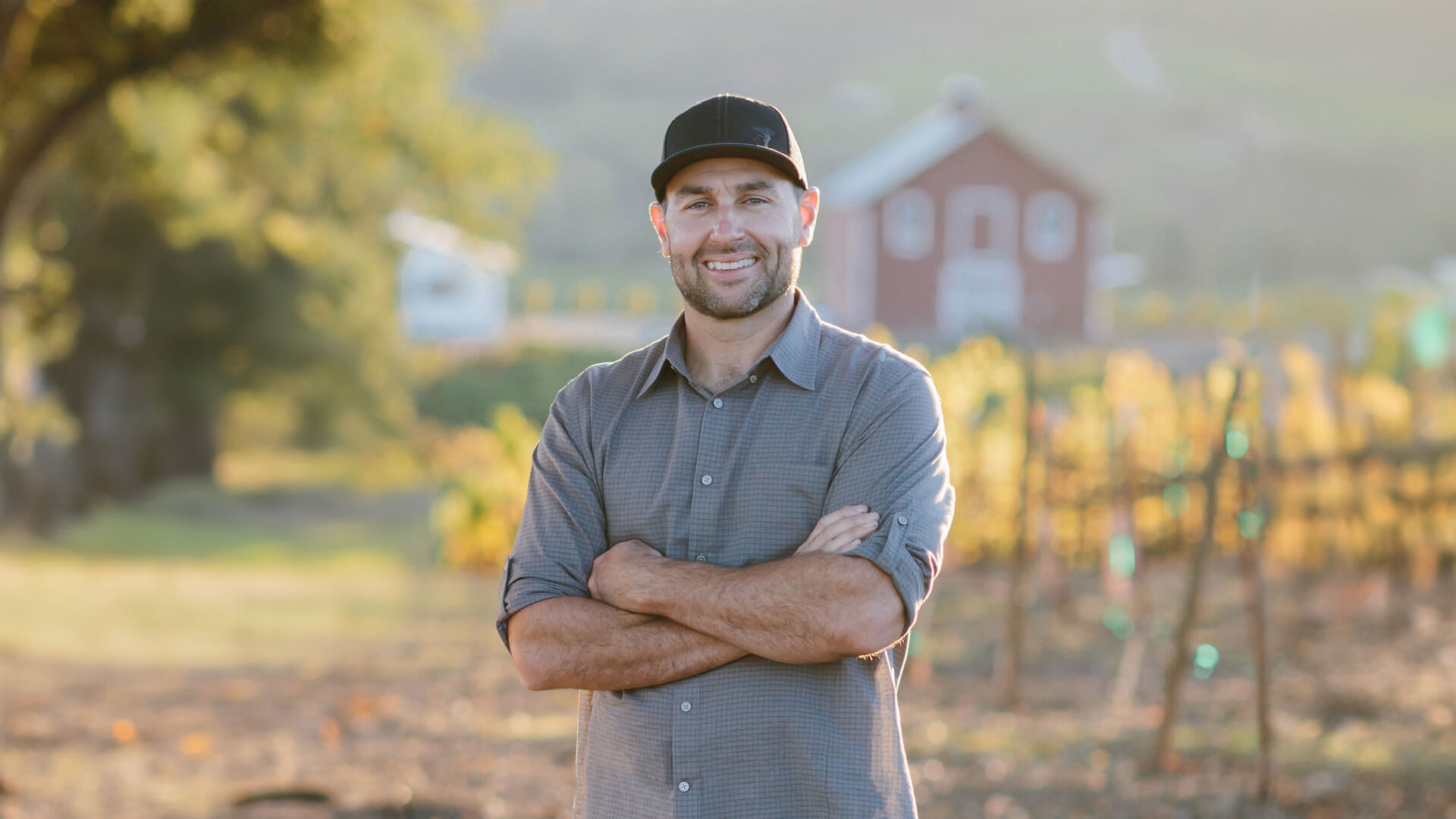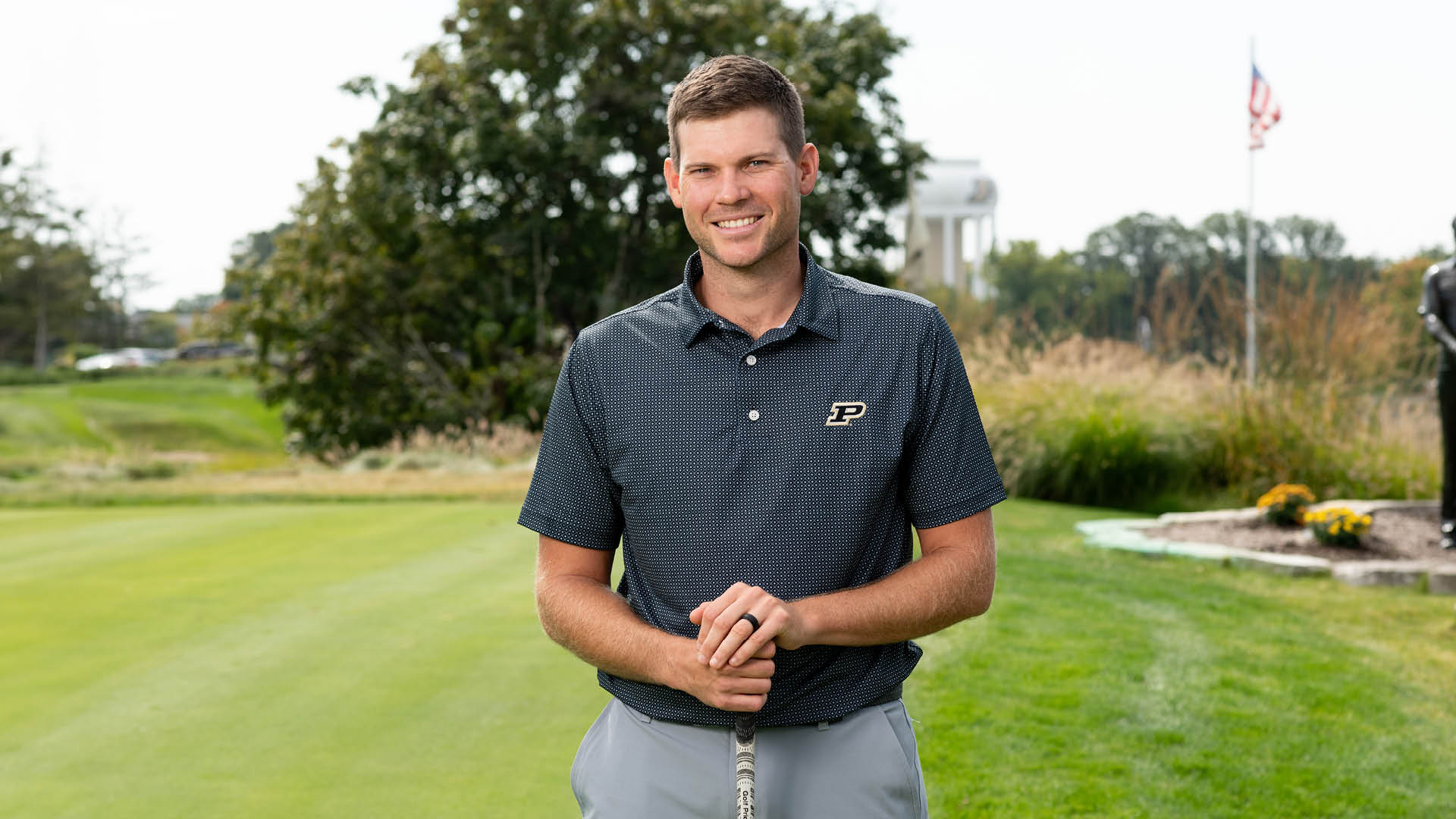Podcast Ep. 89: Purdue Research Series | A Look Into NASA’s James Webb Space Telescope and Boilermaker Ties to Space With Danny Milisavljevic
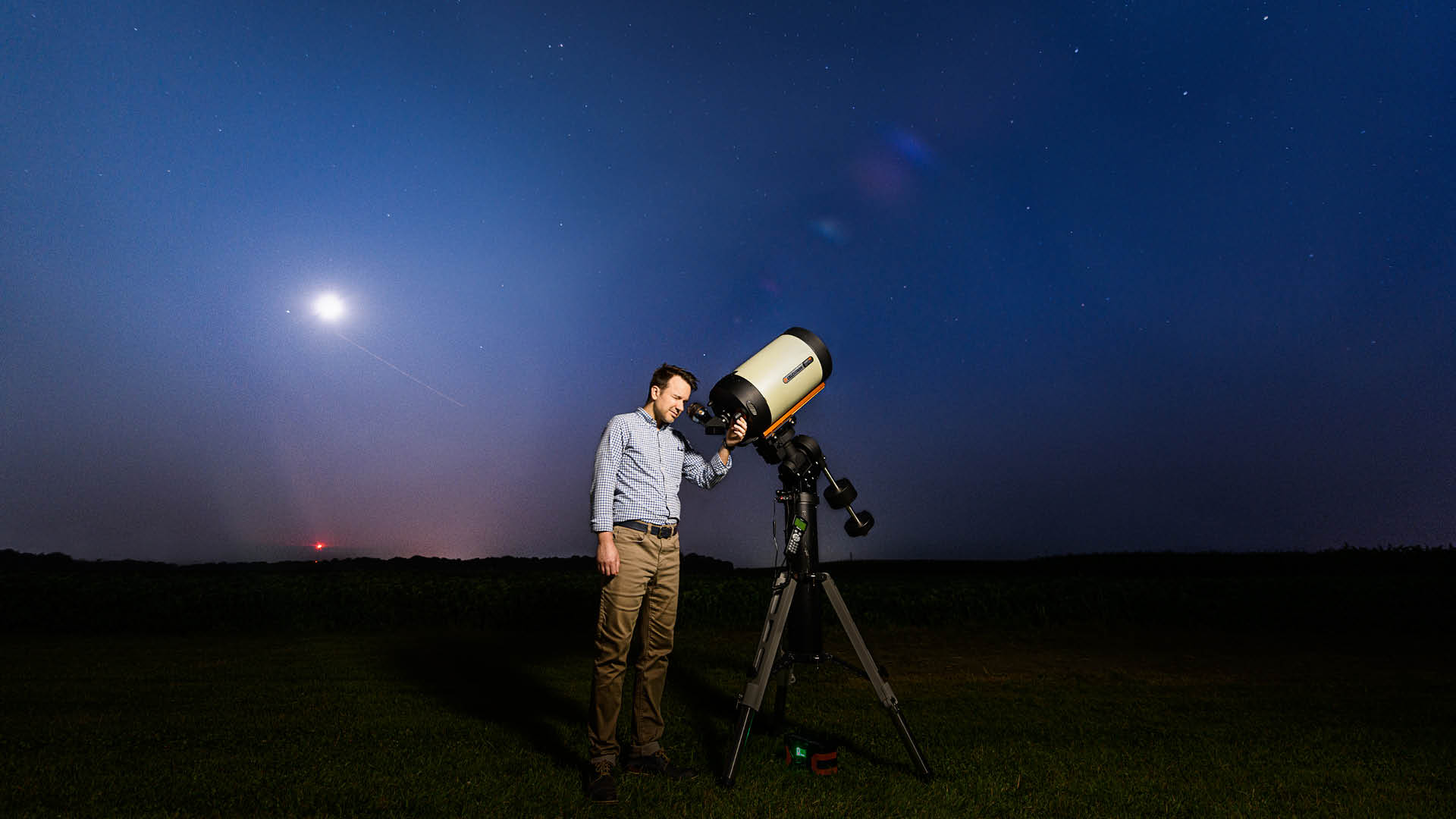
In this episode of “This Is Purdue,” we’re talking to Danny Milisavljevic, associate professor of physics and astronomy in Purdue University’s College of Science.
This marks the third episode in our Purdue Research Series, which shares how Purdue provides practical solutions to the world’s toughest challenges.
Danny’s love of space dates back to his days as a crayon-wielding kid writing up an elementary school report on the solar system. Combined with his research in school library encyclopedias, the illustrations he created gave him a sense of being able to touch and understand these far-off planets.
Fast-forward to today, and Danny is using the most powerful telescopes on the planet to better understand the universe. His work, which has been featured on “60 Minutes” and other national outlets, includes leading an international research team to explore a remnant of a supernova explosion in the Milky Way, Cassiopeia A, with NASA’s James Webb Space Telescope.
As much as Danny loves understanding this vast and complex universe we inhabit, he takes equal joy in sharing its wonders with students – whether it’s rare discoveries like a star-destroying black hole nicknamed “Scary Barbie” or just looking up at the moon on a clear night through a telescope in his backyard.
Buckle in, because this episode is taking you for a ride across the Milky Way – and Danny’s enthusiasm alone is enough to power the whole trip!
- Learn more about Danny
- Learn more about Purdue’s Department of Physics and Astronomy
- Learn more about the James Webb Space Telescope
- Learn more about Purdue’s “Cradle of Astronauts”
- Watch Danny’s “60 Minutes” interview with Scott Pelley
Full Podcast Episode Transcript
Danny Milisavljevic:
I’m Danny Milisavljevic and you are listening to This Is Purdue.
Kate Young:
Hi, I’m Kate Young and you are listening to This Is Purdue, the official podcast for Purdue University. As a Purdue alum and Indiana native, I know firsthand about the family of students and professors who are in it together, persistently pursuing and relentlessly rethinking, who are the next game-changers, difference-makers, ceiling-breakers, innovators, who are these Boilermakers? Join me as we feature students, faculty and alumni taking small steps toward their giant leaps and inspiring others to do the same.
Danny Milisavljevic:
There was a star there and it lived its life for millions of years. And then in the blink of an eye, in a second, it underwent this tremendous explosion and ejecting all the material that will go on to form new stars, new planets, potentially with life. This is a fundamental process that I think as citizens of the universe we all should understand.
Kate Young:
Hi, This Is Purdue listeners, and thanks for joining me for the third episode of our 2023 Purdue Research Series, which tells the stories of how Purdue provides practical solutions to the world’s toughest challenges. And by the way, if you haven’t checked out our first two Purdue Research Series episodes with Purdue’s Chief Semiconductor Officer Mark Lundstrom and food science professors Amanda Deering and Haley Oliver, be sure to give those a listen after this one.
So this episode, well, let me tell you, you are in for a treat. After all, what’s a Purdue Research Series without an episode that highlights the extensive history of Purdue’s research and ties to space? Today we’re talking to Danny Milisavljevic, Associate Professor of Physics and Astronomy in Purdue University’s College of Science. Here’s a few things we’re going to cover in this episode, the most powerful telescope in the world, NASA’s James Webb Space Telescope; Cassiopeia A, a remnant of a supernova explosion in the Milky Way, located about 11,000 light-years from Earth; a virtual reality field trip; Danny’s experience being interviewed by the Scott Pelley on CBS’s 60 Minutes; and Scary Barbie.
All right, buckle in because this episode is taking us all for a ride across the Milky Way, and Danny’s enthusiasm alone is enough to power the whole trip. Danny, thank you so much for joining us on This Is Purdue. We’ve heard so much about you. You’re a legend at Purdue.
Danny Milisavljevic:
Well, I’m grateful that you say that, but I’m just equally as happy to be here in front of you right now.
Kate Young:
Tell us a little bit about your role at Purdue and introduce yourself to our listeners and our viewers.
Danny Milisavljevic:
I’m an assistant professor in the Department of Physics and Astronomy. I balance my responsibilities between maintaining a research program that utilizes astronomical facilities around the world, both on the ground and in space, and that goes along with the teaching responsibilities that I’m very happy to do. I teach a variety of undergraduate and graduate courses.
Kate Young:
And you’ve had an interesting path to Purdue. You went to school in London, later to Dartmouth, to Harvard. What brought you to Purdue? Was it these big names like Neil Armstrong or what led you here?
Danny Milisavljevic:
Well, that was part of the draw. At the time when I was considering my options, the decision was one that was dependent on myself and my wife, and it was really Purdue that stuck out the most. So Purdue showed their excitement in me coming as a researcher, but also in my wife, who brought a small business from Massachusetts. And I was really impressed and no other institution came close to being able to accommodate both of our needs.
Kate Young:
Let’s rewind to Danny’s childhood. His love of space dates back to his days as a kid, writing up an elementary school report on the solar system. He reminisces on that second grade assignment. And going back even further, your interest in astronomy and the solar system, that started in elementary school, I read.
Danny Milisavljevic:
Yes, yeah.
Kate Young:
Tell us about that.
Danny Milisavljevic:
Right, right. As far as I can remember, my love of astronomy and things in space all germinated with an assignment that I had in … It was Mr. Wolaski who gave me an assignment to investigate the planets of the solar system. And I remember spending a lot of time, that may have been just a couple hours, which is a lot for somebody in grade two, but I think it was over weeks, where I went to the library and took out books and I referred to encyclopedia. And I had a cover page and at least one or two pages of text per planet. The memory that strikes with me most is making the cover pages, coloring them in with pencil crayon. I still have a sense like I was touching the planet. I had some kind of a handle on the situation.
Being fascinated by all the facts that I learned it was that love that just grew as time went on and I found more and more opportunities to satiate that love. I’m an astro nerd, so it followed me throughout my schooling. In high school I joined an astronomy club. When I was in college, I was actually balancing at the time whether I would go into a more philosophical route of education, hence why I went to London School of Economics for a Master’s in philosophy and history of science. But anyway, I did have research opportunities that a lot of fun came out of that, like a discovery of new moons around Uranus, one of which I got to name.
Kate Young:
So fast-forward to today, Danny went from being a kid interested in the solar system to now working with the most powerful telescope on the planet to better understand the universe. Our This Is Purdue podcast team shot this interview with Danny inside Purdue University’s Envision Center, located on campus in Stewart Center. We’ll talk more about this unique center later in the episode, but for now, just know that Danny frequently references the centerpiece of our shoot, a massive, colorful, vibrant photo of a supernova explosion, also known as Cassiopeia A, or Cas A for short. Cas A was created by a stellar explosion 340 years ago from Earth’s perspective. You can see this stunning image on our social media channels @LifeAtPurdue or on our podcast YouTube channel youtube.com/@ThisIsPurdue.
Danny dives into his work on the James Webb Space Telescope and how this incredible tool has been a major key to his research. One of the most exciting things that you’re working on right now is the James Webb Space Telescope. Tell us more about this telescope. It’s the first of its kind, and how exciting that you’re directly working with it.
Danny Milisavljevic:
I don’t know how I can encapsulate that. I mean, right there behind us is a representation of power behind the James Webb Space Telescope. So it is the largest, most powerful telescope we’ve ever sent into space. And somehow I am among the first group of scientists that get to use this for their research.
And it becomes particularly relevant for me in my understanding of stars and their life cycles and how they come to dramatic ends because it’s sensitive to infrared light. Infrared light is sensitive to some of the material that we need to see in the exploded star to understand what happened, to tell its story.
Kate Young:
Okay, so this research is compelling, it’s alluring, it’s headline-grabbing, but why is this research important to everyone on this Earth? See, supernovae like the one that formed Cas A are crucial for life as we know it. And Danny says by understanding the process of exploding stars, we’re actually reading our own origin story.
Danny Milisavljevic:
The big picture is that without this fundamental process in the universe of a star ending its life in this catastrophic implosion/explosion, ejecting its debris, seeding space with heavy elements, these are the raw materials that make life possible. The oxygen we breathe, the iron in our blood, calcium in our teeth, all these are thanks to the production of heavy elements from supernova explosions. And James Webb, again, is sensitive to the infrared lights from which these stellar explosions emit and can be traced back to closest to where the explosion took place originally.
Kate Young:
In April 2023, NASA released the never Before Seen images of Cas A. Cas A is the youngest-known remnant from an exploding massive star in our galaxy, and Danny and his team have been learning more about how a supernova like this one can occur.
Space and galaxy exploration is interesting largely because of that unknown element, so naturally 60 Minutes on CBS was interested in learning more about these images of Cas A. Danny was interviewed in Washington DC by veteran news anchor Scott Pelley about his collaborative work on the James Webb’s telescope. He shares more about his experience on primetime national television. Tell us about your experience with 60 Minutes and Scott Pelley. Were you nervous, what were [inaudible]?
Danny Milisavljevic:
Oh my gosh. That was one of these terrifying, thrilling moments for me. I put it like this, the James Webb mission has thousands of scientists. And in that fairly brief 12-minute segment they interviewed six people, and I was selected to be one of them. That’s continues to blow my mind to think about that. You couple that with my admiration for the show. I’ve watched it for decades, and especially Scott Pelley, the investigative journalism they do there is amazing. And now to be a part of that.
And I even have a deeper appreciation, because it was great to be on there, my segment was about one minute, but even in that one minute there were hours of phone conversations and dozens upon dozens of emails and text messages to make sure that every fact was correct. They wanted to convey the most accurate story possible. Now they do so in broad strokes, they have to kind of filter it down, but they want to make sure that what they’re saying is both accessible to the viewer and accurate.
Kate Young:
That’s awesome.
Danny Milisavljevic:
Again, going back to Scott Pelley, he is a hero. I have incredible respect. When they told me that it was him doing the interview I really was beside myself. And so having an opportunity to sit face-to-face with him was something I will always remember.
Kate Young:
Could he sense you were kind of nerding out or were you playing a cool with him?
Danny Milisavljevic:
I know, as a matter of fact, that our interview was a little bit out of the ordinary, which is, say, the camera crew and even the producer said, “Yeah, you don’t normally get that kind of reaction, Scott,” because I … “Oh, it’s so great.” I got a picture with him afterwards. Yeah, yeah.
Kate Young:
Yeah. That’s awesome. If you can’t tell by now, Danny is passionate. He’s excitable. Our entire team agree Danny is both fun to be around and fun to listen to. But if you want to see Danny at a whole new level, head over to our YouTube page, youtube.com/@ThisIsPurdue, to watch Danny’s reaction of when he first saw the image of Cas A from the James Webb Space Telescope.
But I know, I know, this is a podcast after all, so we’ll listen to Danny explain his reaction to these images. Take us back to the first time you saw the images from the James Webb Space Telescope. What were you feeling?
Danny Milisavljevic:
Wow. There’s two parts of that story. One is when I first saw any image from James Webb, and I had no special privilege, like anybody else, I saw them with the public. And these were the first batch of images when the telescope was just feeling itself out. They’re calibrating and aligning. It was a really rough trip up there, so they had to make sure that the mirrors were precisely aligned.
In that first image, even though it was just of a bright star, it was spectacular in its clarity. And most importantly, one could download those data and then you play with filters. You can stretch, you can make things highlight, and all of a sudden you could see countless galaxies in the background. And for me, this was this transformational moment in the history of human civilization. We’re so familiar with our naked eye looking up at the stars at night and knowing that the universe is filled with them, but now with James Webb using infrared light, it was seeing galaxies everywhere. There is no empty sky with James Webb because there are galaxies, billions and billions, everywhere. So that was when the first image came out.
The other momentous time is when I saw the first data of my own program. Now what we see behind us here is after a lot of work, a lot of processing, a lot of arrangement, so kind of like the panoramic filter on your phone where you can’t get everything in one shot, you have to pan it together and there’s some software that stitches the frames, we don’t have that luxury. We had to do that all manually afterwards. What I saw was just like a postage stamp area of the remnant, but when I saw it, two things.
One, leading up to that moment was terror. Because unlike when I’m observing with a telescope at night, if I make a mistake by pointing in the wrong location, fine, I adjust and re-expose. But the complexity of the instrument, it’s a million miles away, each command is critical and conservative so you have to make sure that it was pointed at the right spot and you have to make sure that the exposure’s the right length. And as I’m waiting for that file to download, I’m thinking, “Did I do everything right? Did we, as a team, make all the calculations correct?”
And then, when it opened up and I finally figured out where I was looking, because again, it’s a small postage stamp amongst this enormous mosaic that we’re making, that was the excitement. That was the moment of, “We did it,” that this is working as anticipated. There’s no way to properly describe that moment. Thankfully it was captured by my wife. It actually came up on the 60 Minutes segment. People don’t know this backstory, but it wasn’t 60 Minutes there watching me at the time. That was my wife, laughing at me, recording video to share with her friends. “Look, we were supposed to go out Saturday morning, look what Dan’s doing.” And I’m getting all excited about the data, and that’s what it ended up being.
And footnote to that story, it was recorded on her phone. It’s small scale. All of a sudden when we watch that night on 60 Minutes, it’s on the big screen, and you see all these details like some tortilla chip that had been left behind and there is books and chords. We did not prepare this for international exposure.
Kate Young:
And I heard your dog might’ve made an appearance?
Danny Milisavljevic:
Wilbur. Yeah, Wilbur is always there where something exciting is happening. And in this case, he could sense me getting excited. And he associates that with his excitement, which is seeing some kind of rodent or animal running in the front yard. So that’s why he was looking outside the window at that time.
Kate Young:
Okay, seriously, go check out all of the excitement on our This Is Purdue YouTube page. Between Danny and his dog, Wilbur, you do not want to miss it. I asked Danny, what’s something he wished more people knew about the James Webb Space Telescope and supernova explosions like Cas A. Danny paints a cosmic picture for us.
Danny Milisavljevic:
This image of Cas A captures that. It’s kind of like a cosmic art with a background story that I’m hoping to be able to convey to people.
Kate Young:
And you talked about your team pointing this telescope in the right area and processing all this data. Tell us about your team and how you got involved in the first place with the James Webb Telescope?
Danny Milisavljevic:
In preparing for Cycle 1 observation … So the telescope hadn’t even launched yet, this was years in advance, there was a call for scientists to develop proposals. And I felt like mapping Cassiopeia A, this supernova remnant, in this way, at this scale, needed the collaboration of dozens of scientists. And to date, I think we have approximately 50 people from around the world that are all coming together.
I keep looking at it because it draws me in. It’s such a complex thing, it’s messy. So the star itself is exploding. There’s all this incredibly complex physics to model that, but that star had stuff around it and it runs into that, and that influences the resulting debris field that we see and it changes the dynamic. So one needs a interdisciplinary group made up of experts in many areas to be able to really piece together the entire story. And that’s what I was looking for in combining what I call today the dream team behind our Cassiopeia A project with Webb.
Kate Young:
When it comes to this dream team Danny mentioned, he also discussed the challenges of a team of scientists working together, yet spread out across all different parts of the world. As the principal investigator of this web program that captured the observations of Cas A, Danny shares more about the challenges of this research and how the team has overcome obstacles.
Danny Milisavljevic:
These observations from Webb are the most fantastic, complex, rich, enormous of my career. It has taken quite a bit for me to be able to find the right approach to handle that. Yes, I assembled a team, but being able to maintain enough oversight so that we’re all communicating, while having enough ability to follow the projects independently, takes a lot of bandwidth and time. And there was a bit of a transition period where that was all-consuming, but we are now like a lean, mean machine and we’re having regular status updates amongst us all.
Kate Young:
I mentioned a virtual reality field trip at the beginning of this episode.
Danny Milisavljevic:
So now we’re in space. Have a look around.
Kate Young:
Oh my gosh. Don’t look down.
Danny Milisavljevic:
Don’t look down, that’s right. And of in the distance you see the James Webb Space Telescope portrayed.
Kate Young:
Oh my gosh.
Danny Milisavljevic:
That’s actually a life-size mockup to scale of what the James Webb Space Telescope would look like.
Kate Young:
That’s the gold on the telescope…
Danny Milisavljevic:
That’s the gold, that’s right. It’s a very thin layer, it’s like atoms thick, but it’s distributed evenly. We need that to reflect infrared light as good as possible.
Kate Young:
And it’s Purdue colors, how about that?
Danny Milisavljevic:
Black and gold, yes, that’s right.
Kate Young:
That’s right. I had the amazing opportunity to try virtual simulation through digital training tools inside the Envision Center at Purdue firsthand with Danny.
In 2021, Danny partnered with the Envision Center to discover new ways of presenting imagery using VR. Now Danny’s students can use virtual reality headsets to explore space. Ensure VR has been used in a similar way before, but Danny’s solution is more scalable and less expensive. Plus, students can collaborate from anywhere on the globe, they just need wifi. This VR environment allows students to fly through and around astronomical objects, and it’s no surprise, they absolutely love it. Here’s Danny.
Danny Milisavljevic:
This is something I’m very passionate about. Shortly after arriving at Purdue I sought out some place on campus where I could do a better job of handling the data that I had. And here’s a bit of advice for anybody at most, any level, whatever institution you’re at, utilize the facilities that they have. And I knew that Purdue had strong resources in computation, and I found at some point, not too long afterwards, a visualization as well.
And that led me to contact people at the Envision Center, and things just came together nicely. I mentioned before my work with supernova remnants debris fields, my work beforehand had been very closely interested in understanding the three-dimensional arrangements. So when you look at an image, that of course is a projection. It’s not a pancake on the sky, it has depth to it. So using the right observations you can unpack that depth, but I always struggled on how to present it. I made animations that would rotate. And when I was really clever as a grad student, I made those 3D anaglyphs. You put the red green glasses on and you can see it. So I went through that phase, but it was limited. I had no agency on the reconstruction to rotate it at angles that I wanted in real time.
And that’s where virtual reality has really played a pivotal role in making that desire, that dream, become a reality. And so over several years, working with students and research techs here at the Envision Center, we’ve gone all out. And it’s no longer limited to just Cassiopeia A, but we have a number of debris fields from which we can do comparative morphology. And we recognize that this is both a great research tool, where I can in real time rotate, compare morphologies, stick my head in and have a look around, but a teaching platform as well.
And for the past several years through funding that’s been provided by the National Science Foundation and internal grants that have been very grateful here at Purdue, we’ve made it available for students. And we’ve really explored all options. During COVID we were able to rapidly adapt and loan out headsets so that students could put them on in their own dorms or wherever they may be. And we all encompassed the same shared virtual environment. So it doesn’t matter where they are, it would be like we were standing in front of each other, and they could sketch out and I could walk them through.
So it’s like a virtual field trip. There’s no way, I don’t think, that I’ll be able to visit Cas A and bring people there, but we can set up a virtual environment where we can hover around and explore the remnant in all of its three dimensions.
Kate Young:
Here’s a little preview of my experience trying this VR out in the Envision Center.
Speaker 3:
So what do you see right now?
Kate Young:
I see Danny waving up.
Speaker 3:
Okay, cool. So I’m going to hand you these propellors.
Kate Young:
Oh my gosh, the hands.
Speaker 3:
Yeah, so these are your hands, and you’ll hold them like that.
Kate Young:
Oh, that’s really weird. Okay. Where am I pointing at?
Speaker 3:
And Danny can show you around.
Kate Young:
Okay.
Danny Milisavljevic:
Okay, Kate, move your hand. Let’s see. Wave to me. Great, great.
This is Cassiopeia A. Now it doesn’t look as dramatic because we only just got the James Webb Space Telescope data and we haven’t made a three-dimensional reconstruction of it. But at the very least, you can get a sense that it’s not flat, it has real extension to it, and actually we can be inside of it.
The paper came out around Valentine’s Day. Do you notice anything about the shape of-
Kate Young:
It’s a heart.
Danny Milisavljevic:
You see the heart. I didn’t make it up.
Kate Young:
Totally.
Danny Milisavljevic:
So it’s right here, so the remnant with a heart. And part of my research is try and understand why is it like that, why is it not spherical? And that’s a combination of things and what I call nature versus nurture. The explosion have this kind of heart-like shape, or is it just a matter of what it ran into that influenced the environment, the nurturing?
Kate Young:
You can watch more of this on our podcast YouTube channel.
Okay, so as if the virtual reality astronomy experience wasn’t interesting enough, Danny and I had the opportunity to discuss something that’s recently been making a lot of headlines, Barbie. Okay, okay. But not that Barbie. Scary Barbie. So it feels like the whole country knows that there’s a Barbie movie coming out, right?
Danny Milisavljevic:
Yes, yes. I’ll be there.
Kate Young:
So you and a team of researchers are also studying this, but I want you to tell us about it because it’s called Scary Barbie. And was the name picked on purpose to go along with this Barbie mania. I need to know.
Danny Milisavljevic:
So no. Crazy name for a crazy object.
Kate Young:
Okay.
Danny Milisavljevic:
This was the result of a project we’ve been running here at Purdue for several years. And what we’re doing is using sophisticated computer algorithms to be able to find unusual, interesting cosmic explosions, because they’re happening all the time. In fact, in the universe there is a supernova that happens about once every second. So if you listen for it, maybe you can hear a supernova explosion. You can’t, but you know, I always like to have that bit of dramatic eloquence.
Anyway, we have an algorithm that’s picking things, and at some point the system identified this anomaly, and something was different about it from the get-go. Because there are so many candidates for these cosmic explosions they get names, identification numbers, that are automatically generated, and they’re very boring. This one was ZTF20abrbeie, which is like a mouthful and that’s not fun. But one night one of our graduate students, Danielle Dickinson, it was late night and she looked at it cockeyed, and is like, “It looks like Barbie.” So the name stuck then, that’s why we were calling it Barbie.
I started calling it Scary Barbie when I fully appreciated just how energetic and explosive it was. So we were looking for supernovae. This event, once we identified the distance, and that’s always one of the biggest hurdles in astronomy, I see something, but how far away it is. But at some point we were able to measure the distance, and this made it not like a supernova explosion, but something that was a thousand times more energetic than a supernova. And I don’t know if these numbers really reverberate with people, but for an astronomer, that scares me. Already a supernova explosion is scary in energy. Think of the sun. Over its entire lifetime, 10 billion years, you take that energy, you multiply it by 100, and that’s what a supernova makes in one second. Now we have Scary Barbie that’s a thousand times more energetic than that. Terrifying, scary. That’s where the name came from.
And once we followed the trail of evidence, ultimately we realized that the only mechanism we know that can produce something of that energy is the super massive black hole we find at the centers of galaxies. People may be familiar with the mystique of a black hole, this singularity from which not even light can escape, well, there are very large ones at the centers of just about all galaxies, including the Milky Way. And they can be up to and larger than a billion times the mass of the sun. Here’s these large numbers again. But black holes are basically the most efficient method of taking matter, stuff, I don’t want to think about us falling into a black hole, but taking matter and converting it into an energy. So that’s why we ultimately favored the scenario that this wasn’t a supernova explosion, but a super massive black hole that was tearing apart a star that was falling in nearby.
Kate Young:
Danny’s passion for all things space shines. But I also love his passion for teaching and leading his students. I asked him what he loves most about teaching.
Danny Milisavljevic:
Equally satisfying as making a research discovery is sharing that discovery with other people. And that’s what happens in the classroom. I get to share not just my research, but knowledge that other people found and we can have this whole process of learning together. I think that is what makes teaching for me the most rewarding, the most fun, because that energy of learning something new, it can be tapped into and shared.
Kate Young:
How are Purdue’s students involved in your research directly. You talked about someone pointing out, “Wow, that looks like Barbie.” Tell us a couple stories about how your students are involved with the research.
Danny Milisavljevic:
Students are involved with my research at all levels. It may be from a first level student that just needs to learn about, how do I open up an image? What am I looking at? What are the pixels representing? How can I measure the brightness of a star? And with time they can become more sophisticated. And I’m very happy to say that the team that we have made up of … At some point there was postdoc, graduate students and undergrads. There’s a knowledge base that gets shared, and we help each other to train along the way.
So I’ve had undergraduates that are able to lead papers published in scientific journals, graduate students as well. So that Scary Barbie paper, that was led by my current graduate student, Bhagya Subrayan. And I just feel like through having a research group that is supportive and that balances expertise, like the Cas A dream team, we’re able to really leverage that in times of need.
Kate Young:
As for what he loves most about his extensive astronomy research.
Danny Milisavljevic:
The most exciting was being able to see the data come in for the first time, and there’s video evidence to document that.
Here’s another thing. People often think that discovery is made like, oh, there’s a moment when it just comes together. Often there’s a lot of blood, sweat, and tears that incrementally build up until something, and it takes a little bit of time for it to sink in for it to really happen. So I think this image that’s being portrayed, which is a variant of the one that was released publicly by NASA, this is probably among the most rewarding aspects of my career. It took a lot of work to make this image, to put everything together, to balance the colors, and then all the work that will follow from this. This is the wild ride, and it all started from this point when we’re able to correct for things.
I mean, a little bit of background story, drama behind the original image. Webb actually screwed up when it first took the mosaic. I talked about panorama and stitching things together. There was a problem in the software, and when it did its tiles, and I think there’s about 15 of them, it actually left gaps. There was holes in the remnant, and this freaked me out. Now while the majority were covered, there was still enough gaps. And so there was all this work to go and prepare a recovery mission to fill in the gaps.
And it seems like, oh, you just point the telescope again and go, well, it’s a jam-packed schedule, so fitting in additional observations. The spacecraft is constantly rotating, so you’re worried about the orientation so that things look the same. There’s just so much work that went into that. Now that we’ve finally done all that and the post-processing, that is the reward that will stick with me for the rest of my life.
Kate Young:
But what would happen if Purdue wasn’t leading this research, if Danny wasn’t the principal investigator of the James Webb Space Telescope program that captured these observations of Cas A?
Danny Milisavljevic:
If we at Purdue weren’t leading this, I could easily name off dozens of other scientists at other institutions that would want to want to take the lead. This is the best example we have of a star that’s exploded in our own galaxy, the Milky Way. This must be studied, and this is why it was selected as one of the first targets for Webb.
It also be said, if Purdue didn’t have it because we wouldn’t be able to brag that we’re the only Indiana institution as being a principal investigator on a Webb program. So that’s kind of cool.
Kate Young:
And how does Danny think Purdue’s innovative research and strong reputation influence the entire world’s knowledge about space?
Danny Milisavljevic:
I’ll say this, the astronomy part of our Department of Physics and Astronomy is relatively new, let’s say in the last 20 years. But in that small amount of time we’ve really punched above our weight class, let’s say that. Considering there are astro-intensive institutions that have been around for over a century.
And I attribute that to many things. One, we’ve always been an innovative school with a strong emphasis in computation. That has driven a lot … So for my research I’ve really depended on computing resources that we have at Purdue. Along with that is the people, the astro groups started by leveraging its expertise in high-energy physics. And then that expanded out to be aware of growing ability in data science. And branching out beyond that, balancing between those who are experimental and theoretical. And finally now with our latest hire, going from understanding evolution of galaxies and cosmology, to understanding planets outside our own solar system.
Kate Young:
While doing the research for this episode, I quickly learned Danny not only researches and teaches interesting things, he himself is an interesting person. He studied all over the world, from Canada to the UK, to Ivy League schools like Dartmouth and Harvard on America’s East Coast. Danny was a musician in an award-winning comedy group. He loves old books and comics and repurposing furniture. Danny discusses some of his passions outside of astronomy, and he and his wife Lindsay’s admiration for the Boilermaker community.
Okay, we want to get into the personal side of Danny, if that’s okay with you.
Danny Milisavljevic:
Sure.
Kate Young:
You have a lot of interesting hobbies, music, comedy. You like to repurpose furniture, I’ve read. Tell us about the things that you do when you’re not extremely busy working on Cas A and doing all your research and your teaching.
Danny Milisavljevic:
You mentioned some of these things of my past, and I’ll just touch on this a little bit. Yes, so music is a big part of my life. And there was a time where I learned piano, I taught for many years. I learned some guitar. I was in a couple bands. That was a different Danny Milisavljevic. I had long hair, it was dyed black. I was in army fatigues, and we were really into that circa ’90s industrial metal music and stuff. Anyway, so I’ve grown since then. I don’t perform music like I do, but I still love opportunities when I can sit down in front of a real piano and just let the fingers do the walking, and it’s almost meditative in that regard.
The DIY, the repurposing furniture, it started from a pragmatic need is we couldn’t afford the really multi-thousand dollar handcrafted furniture. So we started with some mold, either from a tag sale or IKEA and adding some trim to make it ours and such. So that occupies my time. But I will say, I’m kind of also boring in that my research is also my hobby. There is never any substitute for handling a telescope individually. So even though there is … I’m at the cutting edge, the state of the art by using the James Webb Space Telescope, it will never substitute the joy, the satisfaction that I get when I’m out myself at night using a telescope, watching the exposures come in real time and just appreciate … It gets me all that closer to the universe.
Kate Young:
And you talked about your wife, Lindsay, at the beginning of this, that West Lafayette community welcomed her and her business. And it’s a really cool, unique business, and I want you to tell our listeners about it.
Danny Milisavljevic:
Right. So the business is French Knot. It is a knitwear and gift company located in Lafayette. They make all sorts of things by working with artisans in Nepal. That includes mittens, hand warmers, scarves and gloves, and many other gift items. And she sells to major retailers like Anthropologie, Free People, Sundance Catalogs. I wouldn’t normally know these brands, but because of Lindsay, I do. She was on QVC many times.
Kate Young:
Oh, wow.
Danny Milisavljevic:
And although she doesn’t maintain a shop in town, you can purchase her products. There’s a local boutique called Two Tulips, or you can go to frenchknot.com. And there’s also the famous Annual Warehouse Sale.
So as I mentioned in the beginning, one of the draws to the Greater Lafayette area was the support that she found from Purdue, where she was connected with faculty, consumer science, and was able to get wonderful interns to help with running the business, expertise, small business owners in the area, connecting with the MatchBOX locally and the people there. So it’s been amazing to watch her business thrive in that transition as we moved from Massachusetts.
Kate Young:
And you’ve been here since 2017, is that right?
Danny Milisavljevic:
That’s correct.
Kate Young:
What has this community meant to you over the years, and with her business thriving and you doing all this exciting research, what does that Purdue and Lafayette community mean to you?
Danny Milisavljevic:
If I could phrase it like this, looking back on these six years, I don’t think that there’d be any other place that could reproduce the satisfaction and success that I found by moving here. And I mean that on multiple levels. One, we’ve talked about the research. My goodness, being able to use the James Webb Space Telescope and such, finding Scary Barbie and other cosmic wonders.
But also just personal wellness, as far as being able … I mean, we moved in and day one we had the Midwest greeting. People came with gifts and getting to know each other. I remember where we were living in Massachusetts, and I tried to introduce myself to the neighbor, and I think she thought I was some creep trying to strike up a conversation. I was just trying to introduce myself. So that package of the abilities that Purdue brings, along with the nurturing environment of the Greater Lafayette area, has been just a cocktail for success.
Kate Young:
Do you have a favorite memory or two that stick out from your time here over the past six years?
Danny Milisavljevic:
The memory that’s coming to me immediately is my first time on campus, day one of the big job. My wife dropped me off, and I looked around and I saw students going to class. I’m lost for words to describe it right now, but it was this overwhelming sense of, “Oh my goodness, I’m part of this. I’m contributing to this enormous thing that is Purdue.” That, along with the planes flying overhead and I think more NASA T-shirts per capita than any other campus on the United States, that was like, wow, I found home.
Kate Young:
What role would you say Purdue has played in your life?
Danny Milisavljevic:
I mentioned this already in the sense of there’s no place that could reproduce the conditions that would have led to satisfaction and success that I feel. I have just such a respect from the people, their professionalism, their compassion, their expertise.
The willingness to take risks, to try something different. I struggled for a long time at other places to draw in interdisciplinary people to tackle projects. For instance, this project with the Envision Center, I tried that for a long time, but it was only at Purdue that I was able to get traction on that. So what I really am happy about coming here to Purdue is the opportunity to explore all of my interests and really realize their full potential.
Kate Young:
We’ve heard throughout this whole interview all the persistence it took to get this image up, have this image at your disposal. What does the word “persistence” mean to you?
Danny Milisavljevic:
When you say “persistence,” there’s a quotation from my father that comes to mind, and it’s one that I say to my students. “You do nothing, you know nothing.” And this is broken English from my father who was an immigrant from the former Yugoslavia. But that’s the translation that comes across. You do nothing, you know nothing. What does that mean? It means that unless you’re out there doing it and you’re building the muscle memory, you won’t be able to really fulfill as far as you want.
And so I give the example of, I want to be a basketball player, so I’m going to read every book that was ever written about how to play basketball, and I’m learning all the strategies. Does that mean when I go on the court, I’m going to be sinking three-pointers from the get-go? No way. Absolutely not. I need to be on the court all the time, hours every day. Practice, practice, practice. And that’s the only way that I’ve really found true success, is to constantly being there, doing it. They say half the job is showing up, and that’s part of it, that regular follow up. And not to let some obstacle hold you from continuing.
Often when I hear people complain about some topic about, “Oh, this research isn’t going the way I’m going to do.” Right, you’ve identified an obstacle. What are you going to do about it? That’s the next step. Take action, persevere, show that persistence. That will get you across.
Kate Young:
As for Danny’s next giant leap, well, nobody should be surprised after listening to this episode that his leap is aimed towards benefiting his students.
Danny Milisavljevic:
I really want every student that comes to campus to have an opportunity to use a telescope. And not the kind of rinky-dink kind, but something research-level, pointed at an astronomical wonder. Because this institution is so founded on space exploration. As I mentioned, even me to this day, it never gets old when I set up a telescope and look through. Even the moon, which you think is boring, you see it so often in the night sky. No. Whenever I see it under the magnification possible of a telescope, it gives a chill down my spine and it still, it provides rejuvenation of all the inspiration that drives me to carry out my research. And I think some of that should be sprinkled on every student when they come here.
Kate Young:
We can’t thank Danny enough for joining us. What a blast of an interview, pun intended.
Danny Milisavljevic:
Thank you very much for the opportunity to speak with you and share a bit of my story with your listeners.
Kate Young:
Well, thanks for your time. It was a pleasure. Head over to our podcast YouTube page, youtube.com/@ThisIsPurdue, to check out our full video interview with Danny. And if you’d like to learn more about NASA’s James Webb Space Telescope, Danny’s 60 Minutes interview or Purdue’s Cradle of Astronauts, we have everything linked for you in our episode show notes. And stay tuned for our last Purdue Research Series episode for 2023 with bioarcheologist Michele Buzon, which is releasing in September. Follow This Is Purdue wherever you get your podcasts so you never miss an episode.
This Is Purdue is hosted and written by me, Kate Young. At this special podcast shoot for our third Purdue Research Series episode, our videography was led by Ted Schellenberger, in collaboration with John Garcia, Thad Boone, Alli Chaney, and Zach Mogensen. We also had production assistance from Carly Eastman, Maria Welch, and Delaney Young. Our social media marketing is led by Ashlee Shroyer and Maria Welch. Our podcast photography for this incredible shoot was done by Rebecca Robiños. Our podcast design is led by Caitlyn Freville. Our podcast team project manager is Emily Jesulaitis. Our podcast YouTube promotion is managed by Megan Hoskins and Kierstin Bauman. Our podcast research is led by Sophie Ritz, and additional writing assistant is led by Joel Meredith.
Thanks for listening to This Is Purdue. For more information on this episode visit our website at purdue.edu/podcast. There you can head over to your favorite podcast app to subscribe and leave us a review. And as always, Boiler Up.
